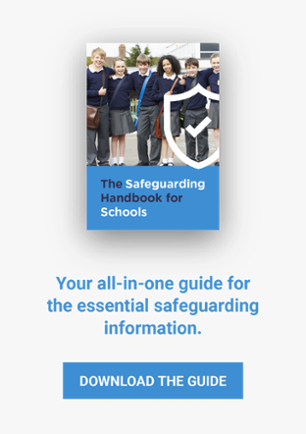What Is the Role of a Designated Safeguarding Lead (DSL)?
What Does DSL Stand For?
A Designated Safeguarding Lead (DSL) is a person appointed to make sure that schools and colleges adhere to their statutory safeguarding policies and duties. If you work in a place where there may be vulnerable children or young people, having a DSL is a useful and often vital addition to your team.
In this piece, we will explore the importance of DSLs and what their roles pertain to:
- Why Are DSLs Important?
- How to Become a DSL
- The Responsibilities of a DSL
- Further Responsibilities of a DSL
Why Are DSLs Important?
A DSL has the status and authority within a school or education provider to commit resources to safeguarding actions and issues. They’re also required to support and direct staff on safeguarding issues.
The role of the DSL was specified in the Children Act 2004, stating that every organisation that works with children should have a role dedicated to safeguarding. It’s a responsibility that holds both strategic duties within the organisation’s frameworks and campaigns, as well as having day-to-day duties to undertake.
DSLs are not positions exclusive to schools and other education providers. Many industries and working environments across a wide variety of sectors include DSLs as part of the workplace.
How to Become a DSL
There are several ways to become a qualified DSL. Various NGOs offer training, such as the NSPCC or the SSS.
A DSL should undertake this type of training course every two years so that they are ensuring that they are always up to late with the latest techniques and procedures.
As well as training courses, DSLs must regularly keep up-to-date with changes in safeguarding policies and government requirements.
The Responsibilities of a DSL
There are a number of broad responsibilities that the designated safeguarding lead has to dedicate time and energy to undertake. They can be separated into three categories: referrals, training and awareness.
Referrals
Referrals are the situations where a breach in safeguarding policies or issues of maltreatment have been identified and are subsequently reported.
The responsibilities include:
- Any case of suspected child abuse is to be referred to local authorities.
- Inform headteacher/principal of issues and/or ongoing enquiries. This is to be done under section 47 of the Children Act 1989.
- When needed, act as a source of support and expertise for other staff. Mediate, lead and educate on safeguarding matters. Aid referral decision-making process by liaising with relevant agencies.
Training
DSLs should give appropriate training to all staff members. DSLs also need to take training regularly so that they can successfully keep to safeguarding policies. A DSL must:
- Have detailed, applicable knowledge of both:
- Child protection case conference.
- Child protection review conference. - Thoroughly understand assessment processes for providing adequate help at the appropriate timings and intervention procedures.
- Remain aware of the needs of children, especially those with special educational needs and in vulnerable positions.
- Keep accurate records or cases, referrals, issues and concerns.
- Keep meticulous records and resources for further training.
- Create safe communities for children, listen to them and respect their wishes.
- Ensure all staff and colleagues have access to and knowledge of safeguarding procedures.
Awareness
Raising awareness of safeguarding procedures and protocols is a key component of any DSLs’ responsibilities. A DSL must:
- Ensure their school or organisation’s child protection policy is both publicly available and reviewed annually, with relevant updates being duly implemented.
- Make connections with the Local Safeguarding Children Board (LSCB) and notify staff of training opportunities and new policies.
Further Responsibilities of a DSL
Referrals, training and awareness are the three main responsibilities of a DSL. But they aren't the only duties that need to be completed. Here are a few others:
- Reviewing who is subject to a Child Protection Plan.
- Gathering evidence in relation to any referral.
- Consulting LSCB for additional information and guidance if needed.
- Working with families and involved parties.
- Being the first contact point for anyone with safeguarding concerns.
A DSL is a crucial part of any successful attempt to enact safeguarding policies, but are a small part of the bigger picture that is safeguarding policy and practice. If you’d like to discover more about safeguarding within an educational environment, explore our eBook.
Learn More About the Role of a Designated Safeguarding Lead and Safeguarding in Education More Broadly
By downloading our guide to safeguarding, you’ll be able to learn about the legalities and responsibilities that you need to know, what to do during a disclosure, important information and more.
Click the link below to download.
If you'd like to hear about more about issues facing the education sector as a whole including pupil engagement, the role of technology, innovative teaching practices and so much more then please do come along to the SAAShow in London on the 1st May.
The Schools & Academies Show stands as the education community’s largest one-stop shop, offering everything you need to further strengthen your strategic business and school improvement plans for a lasting impact. Please do join us in London on the 1st May.
You can find visit the full agenda here: https://www.schoolsandacademiesshow.co.uk/ or register by clicking on the banner below.






